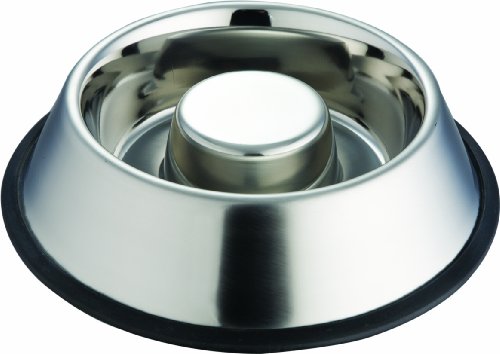
The adrenal gland (there are 2) ia a small and inconspicuous organ, but it serves many important functions through the production of hormones. The adrenal gland is an organ located in the abdominal cavity near the kidneys. It produces steroids, but not the type of steroids that stimulate muscle growth. It produces mineralocorticoids, which regulate kidney function and control salt loss in the urine. The adrenal gland also produces glucocorticoids which play an integral role in cell membrane stabilization, blood sugar levels, and urine production. There are two main disorders that can affect the adrenal gland – Cushing’s and Addison’s disease. This article explores the clinical signs, diagnostic tests and treatments for Cushing’s disease.
Cushing’s disease is also known as hyperadrenocorticism and is caused by an overproduction of glucocorticoids by an adrenal gland tumour. The release of glucocorticoids is controlled by the pituitary gland, which is a tiny gland found at the base of the brain. The pituitary gland releases adrenocorticotrophic hormone (ACTH), which triggers the adrenal gland to make glucocorticoids. Therefore, a pituitary tumour can cause overproduction of ACTH, which results in an overproduction of glucocorticoids in the bloodstream. An adrenal tumour also causes a similar effect. Understanding how Cushing’s disease develops is important in understanding how the disease is diagnosed and treated.
Excessive glucocorticoids have a range of effects on the body. Increased water intake and urination are the most common clinical signs of Cushing’s disease in the dog. Other signs that may be seen include decreased muscle mass, weakness, thinning of the skin and hair loss. Cushing’s disease may also decrease the efficacy of the dog’s immune system, making him/her more susceptible to infection.
Cushing’s disease most commonly occurs in older dogs older than eight years. Some breeds are more genetically predisposed to developing Cushing’s disease. These breeds include the Beagle, Boston Terrier, Boxer, Dachshund, and Poodle.
Cushing’s disease has an insidious onset, so it is not surprising that many dogs have the disease for an extended period of time before the owner will notice a problem. Dilute urine and changes in the dog’s blood such as increased alkaline phosphatase (a liver enzyme) may point towards Cushing’s disease.
The disease is confirmed with an ACTH stimulation test. A blood sample is taken from the dog before he/she is given an injection of ACTH. A blood sample is taken after one hour and the cortisol level is measured. If the cortisol level goes up a little, the response is normal. If it goes up by a lot, Cushing’s disease is confirmed. This test is also used to monitor the efficacy of certain drugs used to treat Cushing’s.
A low-dose dexamethasone suppression (LDDS) test can also be used to diagnose the disease. A blood sample is taken as the dog is given an injection of dexamethasone. Two blood samples are taken post-injection and measured for cortisol. Normally, the cortisol level should decrease because the corticosteroid suppresses cortisol. If it fails to drop, Cushing’s disease is likely.
Treatment options depend on the location of the tumour. Most cases (85%) of Cushing’s disease are pituitary-dependent tumours. Fifteen percent of cases are adrenal tumours which can only be treated with surgery. Pituitary-dependent tumours can be managed several ways. In humans, this type of tumour is most commonly removed surgically. However, in animals, this technique is still in the experimental stages. Therefore, most dogs with pituitary-dependent Cushing’s are treated with medication alone.
Mitotane is one of the most common drugs used to treat Cushing’s disease. It is an oral cytotoxic drug that works by destroying part of the adrenal gland and thus decreases the amount of cortisol that is produced. Due to the drug’s cytotoxic effects, careful monitoring is important to ensure that not too much of the gland is destroyed. If too much is destroyed, the dog could develop hypoadrenocorticism (Addison’s disease).
Ketoconazole is an alternative drug which may be used. It is a drug which affects steroid biosynthesis by the adrenal gland, thereby decreasing the amount of steroids released into the bloodstream.
L-Deprenyl is another drug used to treat Cushing’s disease. It normalizes dopamine levels in the brain which lowers the production of steroids by the pituitary tumour. Efficacy of the drug has been reported as variable.
Trilostane is a newer drug that has been released in the UK to treat Cushing’s. It is an adrenal enzyme inhibitor which decreases the amount of cortisol in the bloodstream. It can currently be acquired in Canada through your veterinarian, but it may take a bit more time and paperwork. Although trilostane is reported to have fewer negative side effects, every drug has its advantages and benefits. Other less commonly used medications are also available. Your veterinarian will discuss the options and find one that works best for your dog.
Regardless of the drug chosen, the dog would remain on the medication for life because the causative tumour would still be present. Blood levels of cortisol would have to be monitored on a regular basis to ensure the efficacy and safety of the medication being used.
Once treatment has started, the clinical signs of Cushing’s disease should slowly disappear. However, it may take days to months for this to occur. The average survival time for a dog with Cushing’s is about two years. This does not mean that Cushing’s disease is a common cause of death. In fact, most dogs diagnosed with Cushing’s die of unrelated causes due to old age.
By Amy Cheung – Pets.ca writer
 Hate to Walk Your Pulling Dog? Heres the Instantaneous Solution (Really!)
Credit: thatmutt.c
Hate to Walk Your Pulling Dog? Heres the Instantaneous Solution (Really!)
Credit: thatmutt.c
 Indipet Slow Feed Pet Bowl
If you have a dog that loves
Indipet Slow Feed Pet Bowl
If you have a dog that loves
 Junior Handler Shows Canaan Dog with Seizure Alert Skill - Westminster 2010
Junior Handler Shows Canaan Dog with Seizure Alert Skill
Junior Handler Shows Canaan Dog with Seizure Alert Skill - Westminster 2010
Junior Handler Shows Canaan Dog with Seizure Alert Skill
 Probiotics for Dogs: Your Dogs Best Friends?
Credit: By Richard Bartz (Own work)
Probiotics for Dogs: Your Dogs Best Friends?
Credit: By Richard Bartz (Own work)
 How to Pick the Perfect Dog Name
What would you call this animal?
Cred
How to Pick the Perfect Dog Name
What would you call this animal?
Cred
Copyright © 2005-2016 Pet Information All Rights Reserved
Contact us: www162date@outlook.com